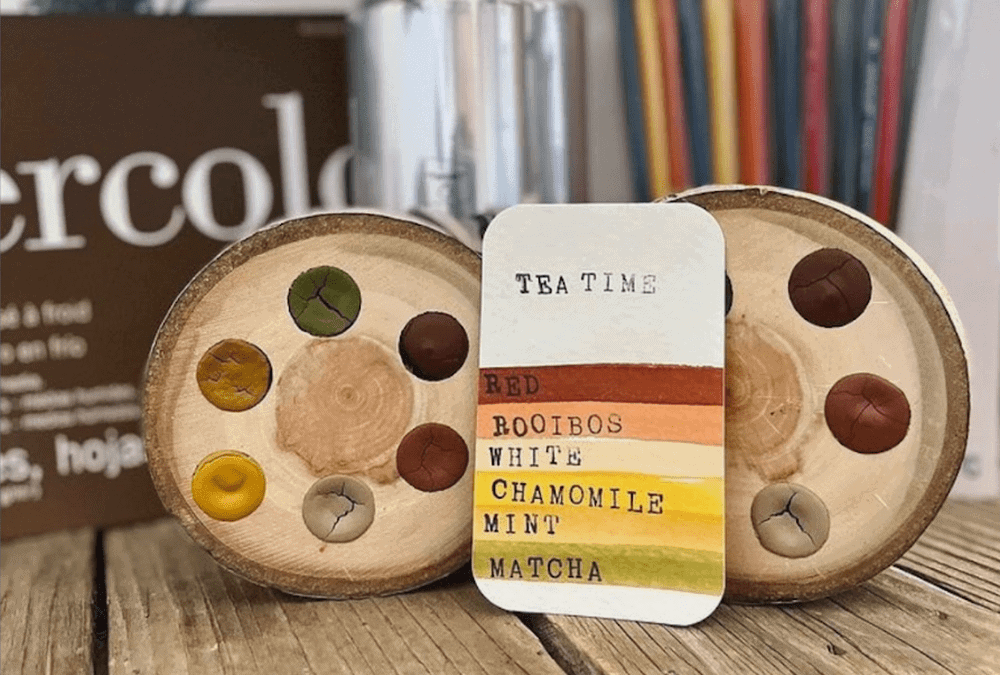
[Image above] Example of a plant-based watercolor palette offered on the Boulder Colors website. Credit: Colorado Voices, Rocky Mountain PBS
Cost of materials is a frequent worry that I hear about from my artist friends. From sketch books and paints to clays and glazes, purchasing high-quality tools can add up quick.
Fortunately, with a little bit of science knowledge, artists can learn to make some materials, specifically paint and glazes, at home quite easily and for far less cost, as explained by Ryan Coppage in the September episode of Ceramic Tech Chat. Learning how to do so, though, can be daunting for artists who have not created pigments or dyes from scratch before.
For those wanting to learn, one Colorado-based artist offers educational tips with an environmentally sustainable twist.
Amanda Fan is the owner of the brand Boulder Colors, along with her husband Peng, who creates the brand’s graphics. Fan creates watercolor paints made from locally grown plants and locally sourced food waste.
In an interview with Rocky Mountain PBS, Fan explains the idea to create plant-based paints came from a video she saw at the start of the pandemic (spring 2020) on avocado pit dyeing for homeschoolers.
“I did it with my kids, and we all loved it, and I kind of went down the rabbit hole from there,” she says.
As the basement began filling with the paints Fan and her kids created, Fan decided to turn the “little kitchen project” into a business. Thus, the brand Boulder Colors was born.
Credit: Colorado Voices, Rocky Mountain PBS
While Fan originally relied on foraged plants for the paints, she started making connections with local restaurants and farms. Now, she regularly gets calls to pick up boxes of food waste, including fruit pits and vegetable stems.
To create the paints, Fan will boil the plants to extract the dyes. She then turns the liquid dye into a solid pigment by binding the liquid to a metallic salt and adding washing soda (sodium carbonate) to create a chemical reaction. There are a few additional steps to the process, which Fan details in her book, “Boulder Lakes: Turning plants into watercolors.”
In line with her goal to promote sustainability, Fan offers several educational products beyond the book to teach people how to make their own plant-based paints, including a set of instructional videos and an “Introduction to pH” kit.
“My goal eventually is to put myself out of business by teaching everyone else how to make their own local paints,” Fan says.
Author
Lisa McDonald
CTT Categories
- Education
- Environment


